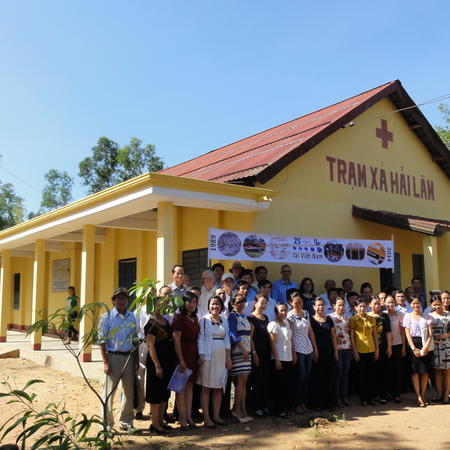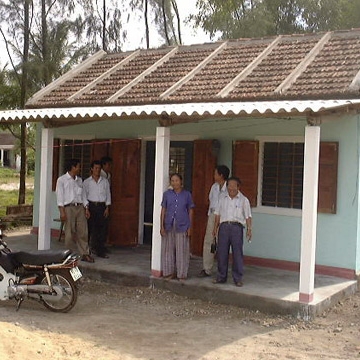How can we respond to a world where the frequency and intensity of disasters is increasing?
Kristalina Georgieva
European Commissioner for International Cooperation, Humanitarian Aid and Crisis response
Ladies and gentlemen
I know from personal experience that the insurance and reinsurance industries are increasingly active in the area of managing the risks from natural disasters:
Munich Re with its NatCatService provides some of the very best research and analysis of natural disasters.
My previous employer, the World Bank, has teamed up with the insurance industry to develop a range of innovative products:
The Bank has piloted “rainfall index insurance” projects in Malawi, Ethiopia, India and Kenya. These projects help to protect farmers against losses caused by droughts.
In the Caribbean a Risk Insurance Facility has been set up to limit the financial impact of catastrophic hurricanes and earthquakes. By pooling risks, governments are able to buy insurance 40% less expensively than if they negotiated individually with insurance providers.
The EUROPA RE initiative focuses on South-eastern Europe and aims to increase the access of homeowners, farmers and SMEs to insurance against natural disasters. At the heart of the project is the creation of a specialized reinsurer. Supporting measures include risk mapping, the design of innovative insurance products and the setting up of small weather monitoring stations.
This increasing activity is a reflection of the fact that we are living in an increasingly fragile world.
Perhaps a majority of people think that natural disasters are a fact of life. Acts of God that happen periodically.
The reality is that the frequency and intensity of natural disasters has increased dramatically over recent decades. In 1975 there were 78 recorded disasters; last year there were 385 - the second highest in a single year. This year we have already witnessed five mega-disasters: massive flooding in Australia and now Thailand, the Christchurch earthquake, the earthquake, tsunami and nuclear incident that hit Japan, and famine in the Horn of Africa.
Before 1988 there had never been a single disaster event for which the insurance industry had to pay out over $1 billion in claims. Since then there have been over 20 such events.
The tsunami in Japan brought home the vulnerability of highly developed countries – and Japan is probably the most advanced country in the world in terms of disaster prevention. In addition to some 20.000 deaths, the damages from this single event have been estimated at €220 billion. This is equivalent to the combined economy of eight European Union member states1 and is the largest economic loss recorded following a natural disaster.
And we should not get the impression that catastrophes are primarily something for other parts of the world to worry about or that Europe has less disasters. In the ten years from 1999 to 2009 80,000 EU citizens were killed by natural disasters. These disasters cost the EU economy €100 billion. And if we look at the incidence of disasters, compared to Europe's relatively small area, the fact is that Europe is one of the most disaster prone regions in the world.
The importance of effective disaster management has been increasingly recognised. This is why the Lisbon Treaty gave the EU important new responsibilities in this area. It is why President Barroso has singled out disaster management as one of the political priorities for the European Commission. And it is why a new Commission portfolio was created for humanitarian assistance and disaster response – my portfolio.
Policymakers working in this area face two fundamental questions: How we can respond to a world where the frequency and intensity of disasters is increasing? And how we can do so at a time when there are no new funds available?
Policy cannot prevent earthquakes and storms from occurring (although we should certainly be doing more to limit the impact of climate change). But it is clear that effective implementation of sensible disaster management policies means fewer deaths and less damage.
In Chile, last year's earthquake was over 100 times stronger than the earthquake in Haiti. But Chile’s excellent prevention and preparedness policies meant that there were only 521 fatalities compared to 230,000 in Haiti. Investment in disaster prevention also makes economic sense. The rate of return on every Euro invested in prevention is between 4 and 7 times. Investments in flood management can save the EU economy €5.5 billion a year by 2020.
The role of insurance
The Commission is committed to working with national and local authorities to develop a "comprehensive and consistent Community disaster prevention framework."
A comprehensive policy means strengthening existing instruments. Last year we tabled a set of proposals to transform EU disaster response and this year we have mainstreamed disaster management into a number of other EU policy areas. But a comprehensive policy also means developing new policy instruments. Here I am convinced that the insurance industry can have an important role in disaster management.
In a world where risks are increasing there is certainly a need for the insurance industry to develop products to help manage these risks. There is a "business opportunity" here: although I am well aware that the specific nature of natural disasters makes it difficult to cover them with traditional insurance policies.
From the side of policy makers there are three very good reasons for working more closely with the insurance and re-insurance industries.
The first is that we rely on your expertise. Managing disasters is about managing risk. And the real experts here are the insurance and re-insurance industries.
There is a lot that we can learn from your risk analysis and risk modelling.The second is financing reconstruction after a disaster strikes. Hedging against risk is more economically efficient and more certain than relying on ad hoc support from – increasingly stretched - public budgets. And as the World Bank projects in the Caribbean show, if risk is shared between countries then premiums can be significantly reduced.
The third reason is that well designed insurance policies can work as a market based instrument to discourage risky behaviour and promote risk awareness. To give an example, if insurance premiums for homes in a flood plain reflect the real risk of flooding then there would be less thoughtless construction and more investment in flood prevention measures. High risk behaviour would be prohibitively expensive. In the US this type of insurance has been compulsory for decades and I believe that this is an approach that it is worth exploring in Europe.
It will certainly be one of the subjects that we will explore when I meet next month with the US Federal Emergency Management Agency (FEMA).Another linked approach, that has also been explored in the US, could be making the implementation of risk management plans a pre-condition of insurance.
Risks vary from Member State to Member State. But natural disasters do not recognise national borders. To deal with events like flooding – which is the single greatest natural threat that Europe faces - we need to work at the level of river basins. This means developing policies at the European level. It is also a fact that insurance companies, and in particular reinsurance companies, work across the EU.
To do so they benefit from a well-established EU legislative framework - and this framework should certainly be used to address the risks from natural hazards There is a strong case for EU policies – including those covering the insurance industry - to focus on improving disaster preventions and strengthening the resilience of our societies. The EU’s Member States have recognised this and have called on the Commission to prepare a report on “increasing the coverage of disaster risk insurance services” by the end of next year.
This conference is a point of departure. And I would like to pay tribute to Michel Barnier for taking this initiative. For many years he has been Europe’s champion in disaster management. He is the architect of the Solidarity Fund. He had a major role in shaping the Solidarity Clause. In the 2006 “Barnier Report” he set out a vision of a European disaster response capacity that helped shape the Commission’s recent proposals.
I look forward to this conference marking the beginning of a close relationship between Europe’s insurers and the policy makers responsible for disaster management. There are a number of areas where we should be looking to work together.
First, we need to make sure that disaster management is embedded into the existing EU legislation governing the insurance industry. I know that this is an issue that Michel Barnier will return to later this afternoon.
Second, we should invest in research. We need a clear understanding of the gaps in the current coverage of insurance products: a study on this is being finalised by the Commission’s Joint Research Council. We need a common understanding of the risks that Europe faces: the Commission is working with Member States to produce an “overview of the major natural and man-made risks that the EU is likely to face” by the end of next year. And we should aim for a common methodology for measuring risks. It makes little sense for insurers, who sell policies across Europe, if the way of measuring risks varies from country to country.
Third, we should use the expertise of the insurance industry to shape our development policies. We have seen in Haiti, in Pakistan and in the Horn of Africa that a natural catastrophe can wipe out, often in an instant, many years of economic progress. Faced with an increasingly fragile world we need to build upon the work that has been carried out by organisations such as the World Bank and use development funding to “invest” against future natural disasters.
Fourth, we should set in place mechanisms for sharing experience on the most effective ways of insuring ourselves against natural disasters. There are many excellent approaches that have been developed in our member states. And we should also learn from the work that has been pioneered in other parts of the world.
The increasing number of disasters means that we need to develop stronger policies to manage these risks. Our security depends upon it. And to a large degree our prosperity depends upon it.
Insurance will be an important part of the policy mix that we need to develop. Over the next 12 months the Commission will be working to develop proposals on how to increase the coverage of disaster risk insurance.
We rely on the expertise of industry to develop these proposals and the Commission will organise a structured dialogue with Europe’s insurance and re-insurance industries to develop a set of options by the end of next year.
Thank you for your attention and I look forward to continuing to work closely with you.











